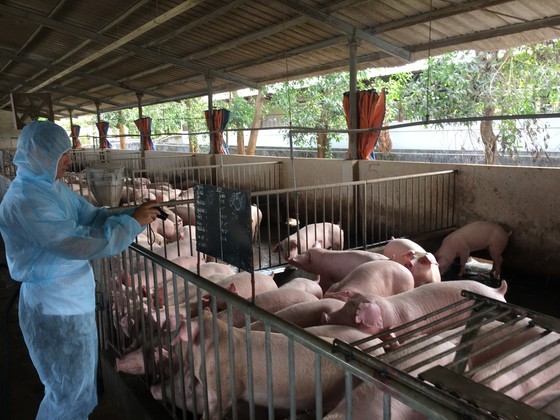
The Ministry of Agriculture and Rural Development on November 2 said that after ten years of implementation of the livestock production strategy for the period from 2008 to 2018, the husbandry industry has achieved fairly high and steady growth with average growth rate at 5-6 percent per annum, meeting basically the domestic demand for food, replacing import and initially exporting some products, such as honey, piglet, pig, salted egg, quail egg, chicken meat, dairy product and animal feed.
In the past ten years, husbandry industry has had 77 technical advances recognized, of which there are four new pig, 12 new chicken, six new Muscovy duck and six new duck breeds. These have been applied to large scale production, giving high economic efficiency, contributing greatly to the development of agriculture and socio-economic development of the country. Husbandry industry has created livelihood and improved the living standards for around 6.5 million households out of 8.6 million agricultural households.
Figures by the General Statistics Office of Vietnam showed that from 2008 to 2018, meat production increased by more than 1.5 times; eggs rose by 2.3 times; fresh milk climbed by 3.6 times; and industrial animal feed surged by 2.4 times. Proportion of husbandry industry reached 32 percent, lower than the target of 38 percent set in the strategy and will be unlikely to reach a goal of 42 percent by 2020. According to the strategy by 2020 meat production will be at around 5.5 million tons. However, egg production of 13.8 billion eggs and fresh milk production of 1 million tons of milk will basically meet the target in 2020.
In the past ten years, husbandry industry has had 77 technical advances recognized, of which there are four new pig, 12 new chicken, six new Muscovy duck and six new duck breeds. These have been applied to large scale production, giving high economic efficiency, contributing greatly to the development of agriculture and socio-economic development of the country. Husbandry industry has created livelihood and improved the living standards for around 6.5 million households out of 8.6 million agricultural households.
Figures by the General Statistics Office of Vietnam showed that from 2008 to 2018, meat production increased by more than 1.5 times; eggs rose by 2.3 times; fresh milk climbed by 3.6 times; and industrial animal feed surged by 2.4 times. Proportion of husbandry industry reached 32 percent, lower than the target of 38 percent set in the strategy and will be unlikely to reach a goal of 42 percent by 2020. According to the strategy by 2020 meat production will be at around 5.5 million tons. However, egg production of 13.8 billion eggs and fresh milk production of 1 million tons of milk will basically meet the target in 2020.
Mr. Nguyen Van Duong, acting director of the Department of Livestock Production under the Ministry of Agriculture and Rural Development, said that Vietnam has joined several free trade agreements with import tariffs at zero percent so many foreign livestock products will be imported to the country. Therefore, husbandry industry must improve for its products to be able to compete in domestic market. The Government will draw out improvement policy while enterprises and associations will cooperate with farmers to develop the husbandry industry.
By 2020, husbandry industry will basically shift to farm and industrial husbandry for above 45 percent in scale and above 60 percent in production, basically meeting demand for livestock products for domestic consumption and aiming for export. The industry will control well diseases, food safety, environmental production and animal welfare. Firstly, it is necessary to improve productivity and reduce cost price of concentrated husbandry and slaughter facilities. By 2030, husbandry industry must be able to export 15-30 percent of livestock products.
























